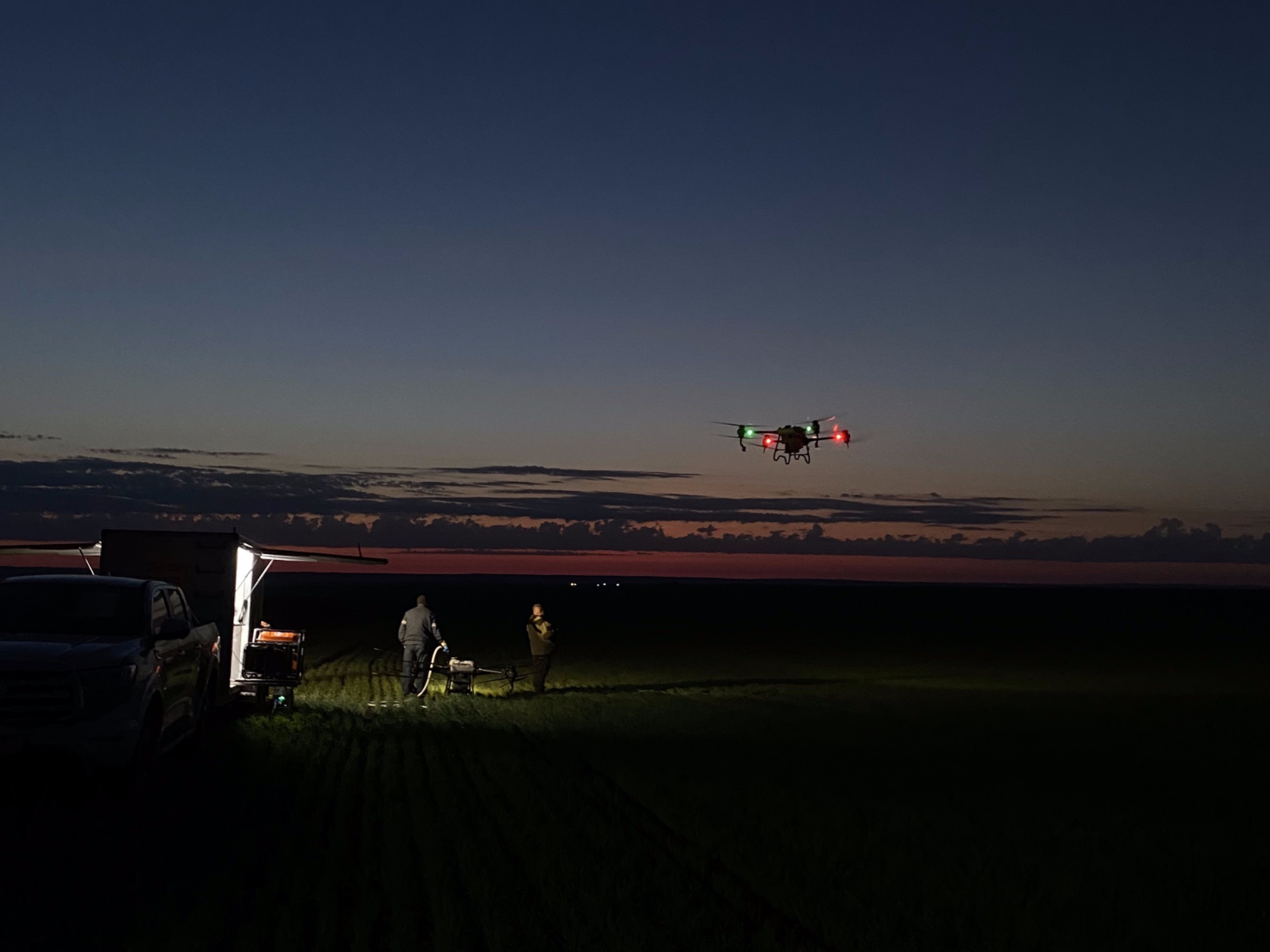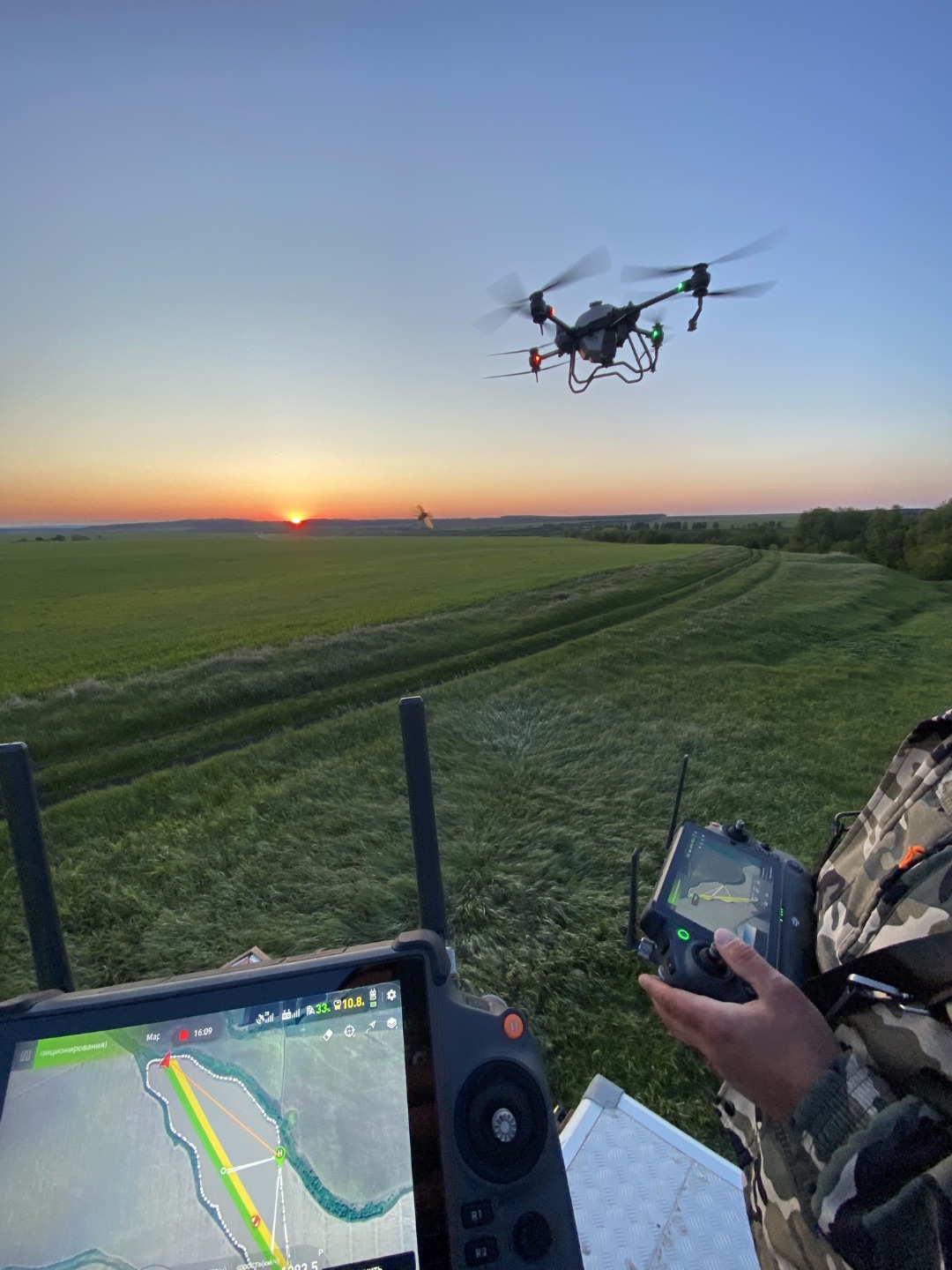CONCLUSION
The use of drones in the Russian agricultural sector is currently at an early stage of development. The services offered by UAS are still limited. At present, Russian drones that have reached commercial readiness primarily provide capabilities for visual and instrumental monitoring as well as the application of plant protection products and fertilizers. Moreover, all multirotor UAS are predominantly assembled from Chinese components. The application of drones in agriculture will become economically justified only if their productivity and efficiency metrics are significantly comparable to those of existing agricultural machinery.
The estimated number of drones intended for agricultural use in the 2022 season was approximately 500 units [60]. The production of high-performance drones for agriculture has not yet reached a sufficient scale to form a competitive market. Market experts forecast that only by the end of 2025 might the threshold of 10,000 agricultural UAS be reached [47]. The development of the service segment in this industry is also in its infancy.
Without improvements to current aviation legislation and active integration of new technologies, the use of high-performance UAS in agriculture remains limited. Given the strategic importance of the agricultural sector, the implementation of targeted measures aimed at breakthrough development in the application of UAS in agriculture—including those proposed in Section 7 of this review—is essential.
The potential for the use of unmanned aerial systems in agriculture is enormous; however, realizing this potential in Russia requires removing identified barriers of excessive regulation on one hand, and progressively eliminating regulatory gray areas on the other.

Currently, the typical design of an agricultural drone for performing agrotechnical operations is a multirotor copter with a maximum takeoff weight exceeding 100 kilograms. It can carry approximately 40 liters of liquid agrochemicals or 50 liters of granular substances. The UAS is powered by 4 to 8 electric motors supplied by lithium flight batteries. The flight duration is up to 15 minutes, which is sufficient to exhaust the onboard payload.
The operational flight altitude above the treated crop surface ranges from 2 to 6 meters. The area treated per single flight is measured in units of hectares and depends on various conditions specific to the particular application environment.
It is worth separately noting the development of heavy agricultural drones designed to operate with payload volumes in the hundreds of liters. Their implementation, in theory, should increase the productivity of agricultural drones and bring it closer to that of light manned aircraft in terms of performance metrics. Currently, refinement work on such equipment is ongoing.
This type of equipment should be classified as a separate category, as its operation requires additional ground support equipment for deploying the UAS into working position and preparing the landing site surface. Moreover, it imposes stricter requirements regarding safety, reliability, and the qualifications of the external pilot.
New models with larger payload capacities per flight appear almost annually. Currently, models with 50-liter tanks for liquid agrochemicals and up to 70 liters for granular materials are available. The increase in payload capacity is expected to continue as battery technology improves, since batteries remain the primary limiting factor at present.
Among the mass segment of agricultural drones, experts note the dominance of Chinese UAS on the Russian market. The most popular brand is DJI. Additionally, the high-tech products of the company XAG are also notable. These manufacturers’ equipment effectively addresses most tasks in the fields. The majority of Russian operators choose these foreign models, creating competition for domestic Russian UAS developers and complicating their market entry. For instance, foreign drones have been supplied under preferential programs funded by Russian taxpayers. The first batch of drones under preferential leasing terms was delivered through JSC “Rosagroleasing” to LLC “Agroplaner” from the Novosibirsk region [61]. The preferential lease was granted for DJI Agras models. Overall, the purchasing company signed contracts with JSC “Rosagroleasing” to acquire 13 agricultural drones totaling more than 49 million rubles.
At the same time, without deep localization of component production or at least diversification of suppliers, the creation of fully Russian agricultural drones seems unattainable. When developing any new model, designers are forced to include components from Chinese manufacturers. This approach is largely forced, but it does not allow for truly independent solutions. Considering the occasional export restrictions imposed by Chinese trade authorities, this situation threatens the sustainable production of new drones and the maintenance of the existing fleet in proper technical condition.
The special military operation (SMO) has accelerated the development of local production competencies. The Ministry of Industry and Trade (Minpromtorg) has commissioned a number of reverse engineering projects, and several manufacturers have acquired equipment for producing high-tech components such as motors, electronic speed controllers, flight controllers, and peripherals [2].
In supporting domestic manufacturers, it is important to consider the activities of companies that have recently entered the sector during a period of rapid growth and attempt to present themselves as Russian producers by merely rebranding Chinese agricultural drones. These so-called “market participants,” akin to the infamous “Belarusian shrimp,” offer Chinese drones labeled as “Russian-assembled,” diverting attention from genuine import substitution efforts. Their presence creates an illusion of a wide and competitive market, whereas in reality, the number of serious players remains very limited. As such, the sector does not require broad systemic support, but rather precise and hands-on management — a strategy that China itself has successfully employed in nurturing global leaders in the unmanned aerial systems industry.
It is also important to highlight that in Asia-Pacific countries, where the production and use of agricultural drones is most widespread, both buyers and manufacturers benefit from substantial support from government institutions. This support takes various forms, ranging from subsidies for small-scale farmers purchasing agricultural drones to outright bans on the import of foreign-manufactured UAVs. The development and implementation of similar support measures in Russia is also viewed as a crucial tool for achieving the projected production targets under the National Project for the Development of Unmanned Aerial Systems (UAS) and related sectors.
Another major challenge facing the Russian market is the complex and resource-intensive system for registering agrochemical products. This means that substances specifically developed for efficient application by agricultural drones must undergo a two-year registration trial cycle and require investments amounting to millions of dollars before they can enter the domestic market. Although all agrochemical developers express strong interest in this segment, it will likely take several more years before specialized formulations become widely available.
In this context, important regulatory steps include equating agricultural drones with conventional sprayers (as per Government Decree No. 740), and applying the Extended Producer Responsibility (EPR) provisions outlined in Government Decree No. 1510 across 12 regions. These measures allow all previously registered pesticides and agrochemicals listed in the national catalogue to be used with agricultural drones.
At the same time, the successful deployment of agricultural drones requires additional research and testing of technologies adapted to the specific characteristics of Russian crop varieties (hybrids) and local soil and climate conditions. Effective implementation demands dedicated test sites for experimenting with various dosages of crop protection agents across different types of crops, in order to validate hypotheses and identify optimal operating parameters. This would enable the formulation of evidence-based application guidelines for specific products and crops. Currently, each company is forced to address these issues independently.
Unfortunately, within the framework of the national project, the proposal to establish a dedicated scientific and production center for agricultural UAVs has not yet been implemented, nor have sufficient funds been allocated to support such an initiative.
